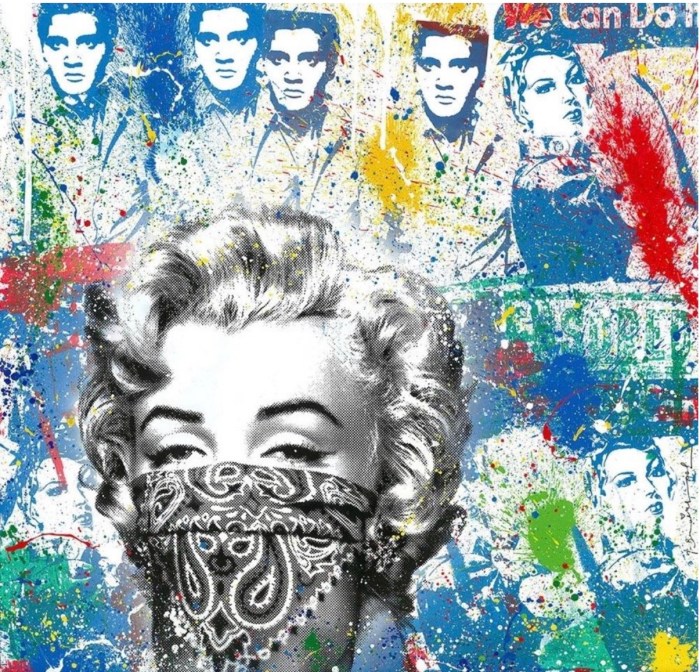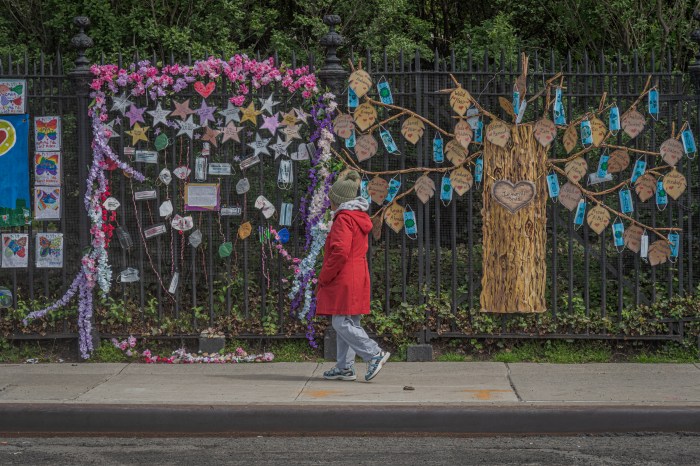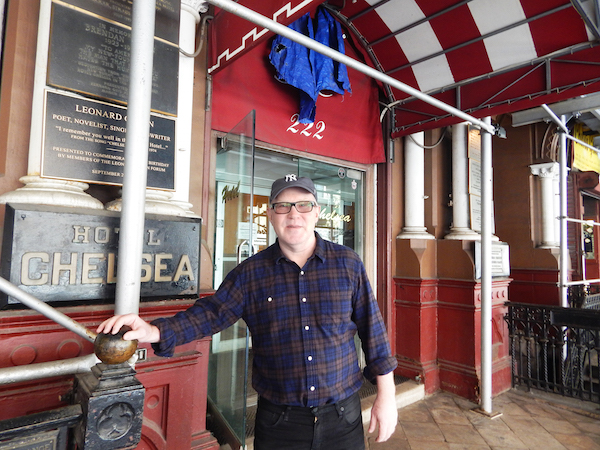
BY PUMA PERL | New Yorkers are notoriously, easily, justifiably irritated by geographical errors and timeline flubs when reading about their city. Fortunately, Ed Hamilton pretty much gets it right. “The Chintz Age,” a collection of short stories, is aptly described on the cover as telling “tales of love and loss.” The characters are living in a time of uncertainty, watching in horror as their neighborhoods turn against them; small businesses are being displaced, chrome and glass have risen up like monsters, and longtime residents are losing the fabrics of their lives.
We meet the characters of the seven stories (and one novella) at pivotal points in their lives. They long for the past as they seek validation in the present. Even the realm of horror is entered, with vultures scheming to take over an apartment. Backed against the high-rise walls of gentrification, the characters find themselves seeking redemption as their lives and relationships are forced into change.
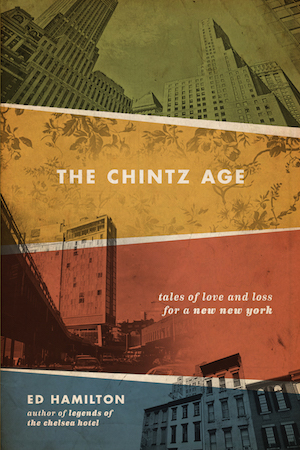
Greg, the protagonist of the opening story, “Fat Hippie Books,” immediately engages the reader. He is the cantankerous and somewhat egotistical owner of a bookstore that is on its way out. Flaws and all, Greg is ours, the type of guy we put up with even when he drives us crazy. Like most of the others in the book, he’s a dying breed; more interested in a dissection of Kerouac’s influences than in a nouveau grilled sun-dried fig cheese sandwich. He’s growing older, and is reluctantly acknowledging that the success he once expected has not come to pass. To the author’s credit, each tale develops fleshed out characters, responding in their own ways not only to the city’s changing landscape and to gentrification, but also to their own realizations and self-assessments. Hamilton’s affection for the outer edges of society is demonstrated by his portrayals of the artists, musicians, writers, pimps, homeless individuals, prostitutes and junkies who roam through the various locales, usually the seediest corners that remain in existence.
Ed Hamilton was born in Atlanta and raised in Louisville, Kentucky. Following graduate school, he taught philosophy in Washington, DC, but always wanted to write fiction. When his girlfriend (now his wife), Debbie Martin, received a job offer in New York, they took the opportunity and ran with it.
“We had long been fans of the Chelsea Hotel, since some of our favorite writers and artists had lived there, and it was the first place we tried. Eventually, [then-owner/manager] Stanley Bard rented us a room, and we’ve been there since 1995,” said Hamilton. Incredibly, they have been able to hold onto their home through years of court cases and the constant noise, dust, and lack of services that go along with renovation. “Life at the hotel has not been pleasant,” he said. “The hotel has been stripped of its art collection, most of the historic rooms have been gutted, and it looks like a filthy construction site. We are hopeful, though not overly optimistic, that the current regime will bring about some relief.”
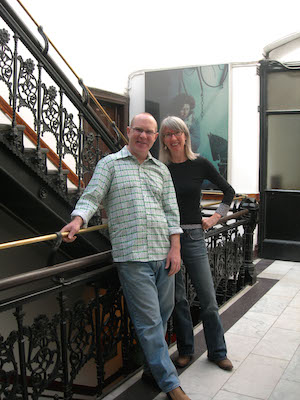
The Hamiltons’ blog, “Living with Legends: Hotel Chelsea Blog,” chronicled the artistic life at the W. 23rd St. hotel, and then the sad demise of that life. Although focused on other projects, they still occasionally update the blog. In the introduction to a previous book, “Legends of the Chelsea Hotel,” Hamilton notes, “This book came about as a result of a fire” and describes Stanley Bard jauntily explaining the literary history of the Chelsea Hotel as he marched the fire marshal through the lobby. Both the blog (which his wife co-created) and the book came about due to his fascination with the colorful history of the hotel and its inhabitants. They tried to use the media attention the book received to bring the Bard family back, but that did not to happen.
I asked the author how he views the connections between the two books. “Though issues related to development and gentrification are often presented in abstract terms, what I saw here at home was a terrible human tragedy,” he explained.
“In my struggle to understand, I wrote several stories about the post-takeover Chelsea, but I found they didn’t have the joy or the humor of the stories in ‘Legends.’ I needed to set the stories elsewhere, and I also needed the distance of fiction to deal with what had taken place in the lives of my friends in Chelsea, and in New York as a whole. ‘The Chintz Age’ is about the personal, private struggles of individual artists in the face of the impersonal juggernaut we call gentrification.”
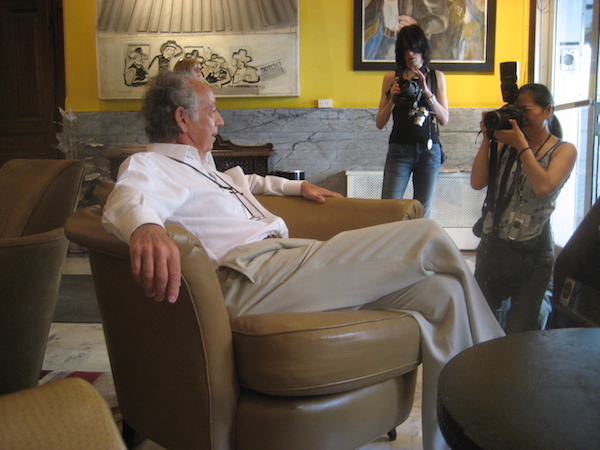
The title, said Hamilton, is a two-edged sword: “On the one hand, it’s meant to evoke the past, as chintz is an old time fabric. On the other, it’s also meant to connote that things today are cheaper and chintzier than in the good old days. The title also refers to the recent trend of pulling down beautiful, historic buildings, and replacing them with cruddy glass and plastic boxes, which look glitzy for a few years, but aren’t designed to last. This is not exactly a Golden Age for New York.”
Some of the places that Hamilton misses the most, he told me, are the Florent, and its presence in the era when the Meatpacking District was a “slightly edgy zone of dark corners,” and Left Bank Books. “The staff was smart and loved to talk about books. Bookstores are one of the key ingredients of an intellectual and artistic life.”
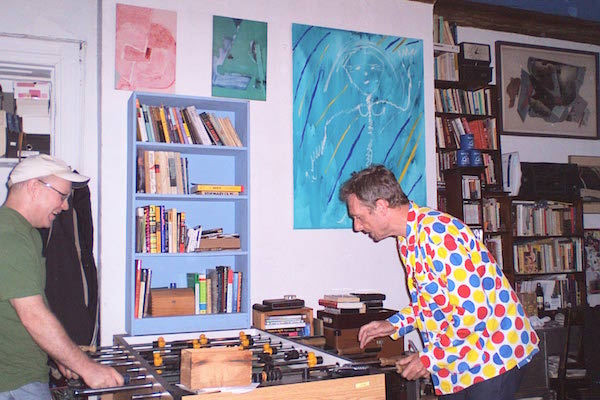
Hamilton, on the back cover of the book, describes his stories as “grittily realistic fairy tales.”
“While ‘fairy tales’ may be the wrong word,” he said, “I wanted to express that, even in certain rather grim situations, where the challenges of a hardcore deterministic, materialistic city daunt and overwhelm us, grinding us to bits, there is still the possibility of transcendence and redemption — both for my characters, and, hopefully, for myself.”
On Thurs., May 12, at 5:30pm, Ed Hamilton will read from “The Chintz Age” at the Muhlenberg Library Community Room, 209 W. 23rd St. (btw. Seventh & Eighth Aves.). Free admission. To purchase “The Chintz Age” (Červená Barva Press, 2015) and for more author info, visit https://edhamilton.typepad.com/edinnyc/.










